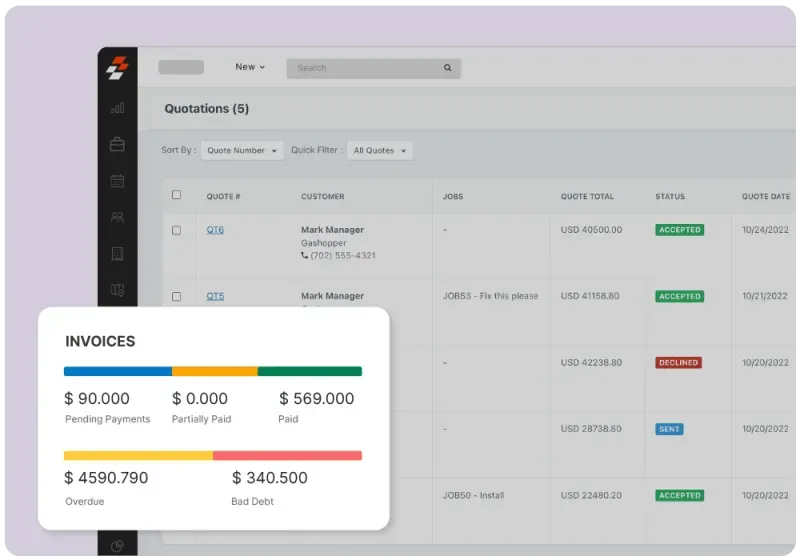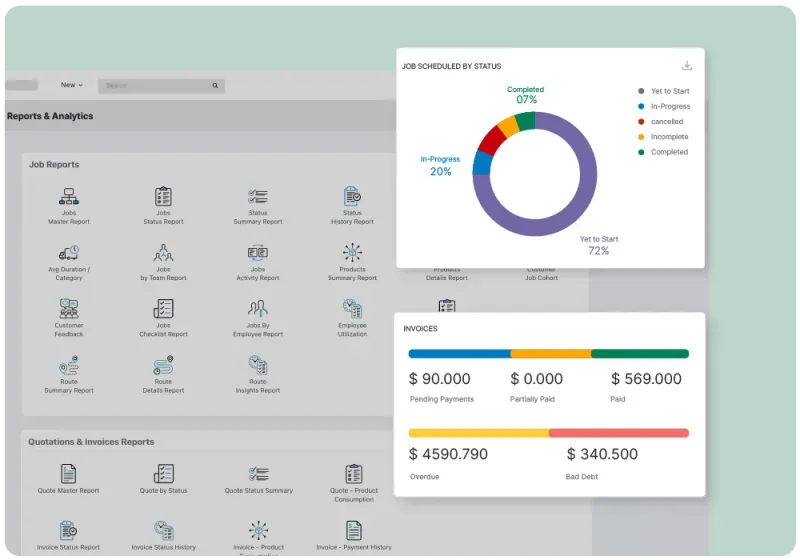Driverless cars, 3D printing, augmented reality, and IoT are some of the names that will hit you right away when we bring up the word...
Learn More...Sign up for our weekly Zuper Pay webinar, every Tuesday at 9:00 AM Eastern

Experience Zuper’s capabilities in streamlining HVAC field operations in real time. See Zuper in action with a live demo tailored to your HVAC business.

Zuper is the most comprehensive solution
Zuper is the most comprehensive solution that has enabled us to transform and modernize business processes. We recommend Zuper to any service business that is struggling to leverage technology for business transformation.
Mr.Farzan MD, AC People








Driverless cars, 3D printing, augmented reality, and IoT are some of the names that will hit you right away when we bring up the word...
Learn More...In this video, we are going to show you how to reschedule a job or work order on Zuper.
Learn More...It’s no secret that consumer expectations are evolving at a break-neck speed. But what may be surprising is just how fast things are changing. In...
Learn More...Zuper is a cloud-based field service management software that helps HVAC businesses of all sizes manage their service requests easily. It enables all stakeholders involved in the HVAC operations to collaborate better across the globe, and enables more efficient field service operations for happy customer experiences.
HVAC businesses can safeguard their administrative data and confidential customer information with Zuper. Zuper helps HVAC businesses scale their operations across the globe without worrying about compliance risks. Zuper is a globally secure platform which complies with all international data security requirements.
In Zuper, businesses can set up a single sign-on to allow secure login of employees. SSO simplifies account management by enabling HVAC businesses to work with existing employee databases and social accounts like Google, Office-360, and more.
In a manual HVAC service environment, businesses have no idea where the technician is at any moment of a time. Zuper Field Service Management helps HVAC businesses keep track of their technicians when they are logged in and travelling to and from customer locations. In addition to tracking technicians, Zuper empowers them by offering intelligent routing services and self-service options.
HVAC service software should come with a set of collaboration tools that enable employees to fulfill and complete work orders, quickly find information they need to get the work done, and above all communicate and work together to ensure customer satisfaction.
Zuper HVAC software provides the exact set of collaboration tools that HVAC businesses need to come together, plan, collaborate, and resolve service requests faster. It helps HVAC businesses communicate quickly to bridge communication gaps, increase field workforce efficiency, and drastically improve collaboration across geographically separate teams.
Zuper Field Service Management System’s invoicing module helps HVAC businesses create invoices, send payment reminders, and convert quotations at the touch of a button. What’s more, Zuper enables HVAC businesses to share invoices with their customers and even accept online payments right away, ultimately helping HVAC businesses to get paid faster.
If you’re looking for an user-friendly HVAC service software, there are plenty of options. You can even find some free HVAC service software, but they will be either cumbersome to operate or demand an upgrade to use specific features.
The best HVAC service software must offer provisions to streamline scheduling, untangle dispatching, simplify estimations and invoicing, and empower field technicians.
We might be a little biased here, but the fact remains that Zuper Field Service Management is used to great success by more than 1000+ businesses of all sizes and types around the world.
What’s more, Zuper has been deemed to be a high-performer in the Gartner Magic Quadrant for field service businesses and is consistently high-rated by both critics and users. We staunchly believe that Zuper FSM will be the perfect HVAC software for your business irrespective of your size.
In a manual HVAC service environment, businesses have no idea where the technician is at any moment of a time. Zuper Field Service Management helps HVAC businesses keep track of their technicians when they are logged in and travelling to and from customer locations. In addition to tracking technicians, Zuper empowers them by offering intelligent routing services and self-service options.
Before making an investment in any HVAC Software, HVAC service providers need to have a solid evaluation method in place. The major purpose of HVAC software is to untangle field service operations and ensure customer satisfaction.
And so, it is critical to pick a HVAC software solution that is capable of simplifying end-to-end field service operations from booking and scheduling to invoicing and online payments while empowering field technicians and keeping customers up-to-date.
In your search for an ideal HVAC software, businesses need to check whether their chosen HVAC software gives the right answers to these imminent questions.
Can your HVAC software be customized?
It is crucial that your HVAC software is flexible enough to be tailored to fit your unique administrative processes. Because, when it comes to HVAC operations one size doesn’t fit all. Hence, you need to make sure that you fit a flexible option that changes to fit into your business needs.
Does it offer automated workflows and processes?
Manual HVAC operations are rife with manual intervention and data redundancy. So, the right HVAC software must be powerful enough to automate critical operations like scheduling, dispatching, work order management, quotations, invoicing, collaboration, and payment processing.
Does it play well with other software?
Choosing an HVAC solution that integrates seamlessly with third-party software like CRM, accounting solution, and HR software. Effortless integration with other business applications can improve overall efficiency of operations and enhance employee productivity.
Without HVAC software, home service businesses will find it tough to manage work order information and offer a seamless customer experience.
The success of a HVAC business lies in winning repeat customers and HVAC software plays a vital role in achieving that. By helping streamline back-office and field service operations, an HVAC solution has a direct impact on an HVAC business’ bottom line while saving the time wasted on data redundancy and manual intervention.
HVAC service software is a technology that helps HVAC service providers schedule, dispatch, and manage their service operations efficiently. At its core, HVAC service software holds all work order related information in a single interface and bridges the collaboration gap between the back-office team, field technicians, supervisors, dispatchers, and customers.
Starting from the moment when a customer books an HVAC service appointment to the moment HVAC service providers send post-service surveys to their customers, HVAC service software brings greater visibility into an HVAC business’ field service operations and keeps the customers in the loop throughout the service lifecycle.